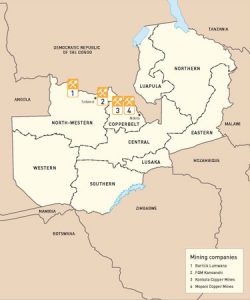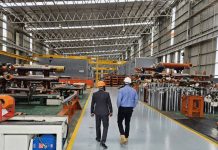Four big mines dominate Zambia’s copper production, complemented by several smaller players who also play an important role. All the mines are backed by a wide range of respected international investors.
The Zambian government, through its investment-holding company ZCCM-IH, is a minority shareholder in nearly all of them – and is, in effect, the biggest shareholder in Zambia’s mining industry.

The “Big Four” are Barrick Lumwana, FQM Kansanshi, Mopani and KCM (Konkola Copper Mines). They account for around 80% of Zambia’s annual copper production. They account for most of the mining employment, most of the corporate social investment and most of the media publicity. They are the leaders in direct fixed investment in the industry, having ploughed a collective $12.4 billion into new mining projects between 2000 and 2014.
Barrick Lumwana, FQM Kansanshi, Mopani and KCM are a barometer for the state of health of the mining industry – and by extension, of the Zambian economy.
Barrick Lumwana is wholly owned by the Canadian company Barrick, which is the world’s largest gold-mining company. The other three each have a majority foreign shareholding, as well as a minority shareholding by ZCCM-IH, the biggest overall shareholder in Zambia’s mining industry.
The majority shareholder in Kansanshi is FQM (First Quantum Minerals), a Canadian mining and exploration company; ZCCM-IH’s stake is 20.6%. The majority shareholder in KCM is Vedanta Resources, an Indian diversified metals and mining group; ZCCM-IH’s stake is 20.6%. The majority shareholder in Mopani is Glencore, the Swiss-based commodity-trading and mining company; ZCCM-IH’s stake is 10%.
The balance of Zambia’s copper production comes from a handful of smaller Copperbelt mines. They are important in their own right and also enjoy the support of respected international mining investors, from countries such as China, Brazil and South Africa.
“The balance of Zambia’s copper production comes from a handful of smaller Copperbelt mines”
These smaller mines, and their major shareholders, are Lubambe Copper Mine (African Rainbow Minerals of South Africa, and Vale of Brazil); Chibuluma Mines (Metorex of South Africa, which is owned by Jinchuan Group of China); NFC Africa Mining (China Non-ferrous Metal Mining Group); CNMC Luanshya (NFC Africa Mining); Chambishi Copper Smelting Company (China Non-ferrous Metals Mining Group); Sino-Metals Leach Zambia (China Non-ferrous Metals Mining Group); Sable Zinc Kabwe (Glencore); Albidon (Jinchuan Group Resources, of China); and Chambishi Metals (Eurasian Natural Resources Corporation, headquartered in London).
The Zambian government has a minority stake in some of these smaller mines too through ZCCM-IH. It owns 20% of Lubambe Copper Mine, 15% of NFC Africa Mining, 15% of Chibuluma Mines and 10% of Chambishi Metals.
The shareholdings that ZCCM-IH has in Zambia’s copper mines is a “free-carry” shareholding. It does not bear any costs or fundraising obligations. ZCCM-IH’s stake is risk-free: it receives dividends and, unlike the other shareholders, it can never make a loss from its shareholding.
Zambia’s copper mines are concentrated in the Copperbelt, and are attached to the towns of Ndola, Kitwe, Chingola, Mufulira, Luanshya, Kalulushi and Chililabombwe. The Copperbelt is the most urbanised and developed of Zambia’s provinces.
However, in the course of the last decade, a “new Copperbelt” has sprouted in the rural and relatively underdeveloped North-Western province thanks to the mining operations of FQM and Barrick. FQM’s Kansanshi mine is in Solwezi, the capital of North-Western province; and 150 km away is its new $2 billion Trident project, which consists of the Sentinel Copper Mine and the Enterprise nickel mine. Barrick’s Lumwana mine is situated about 100 km from Solwezi.
The centre of gravity of Zambia’s copper-mining industry is starting to spread from the Copperbelt to North-Western province. FQM and Barrick’s operations there already account for about half of the country’s annual production, and Sentinel is steadily ramping up production too. This geographical diversification has meant that Zambia now has two major copper-producing regions, which greatly enhances its ability to respond to global demand.
This is evident in production statistics: when the previously nationalised mining industry under ZCCM (Zambia Consolidated Copper Mines) was privatised towards the end of the 1990s, Zambia’s total copper production was just over 300 000 tonnes. Under the newly privatised industry, that figure more than doubled within barely 10 years on the back of sustained investment, followed by a rising copper price.
Production in 2015 reached 711 000 tonnes, and is expected to continue increasing in the coming years.
























Hello,
My name is Adam Bałamucki and I represent ABR3 sp. z o.o. from Poland. I’m interested in copper cathodes of purity 99,996% and we are looking for a supplier. I have a buyer from Asia I’m looking for reliable supplier.
Are You willing to talk with us bout further cooperation?
Best Wishes,
Adam Bałamucki CEO
+ 48 570 846 007